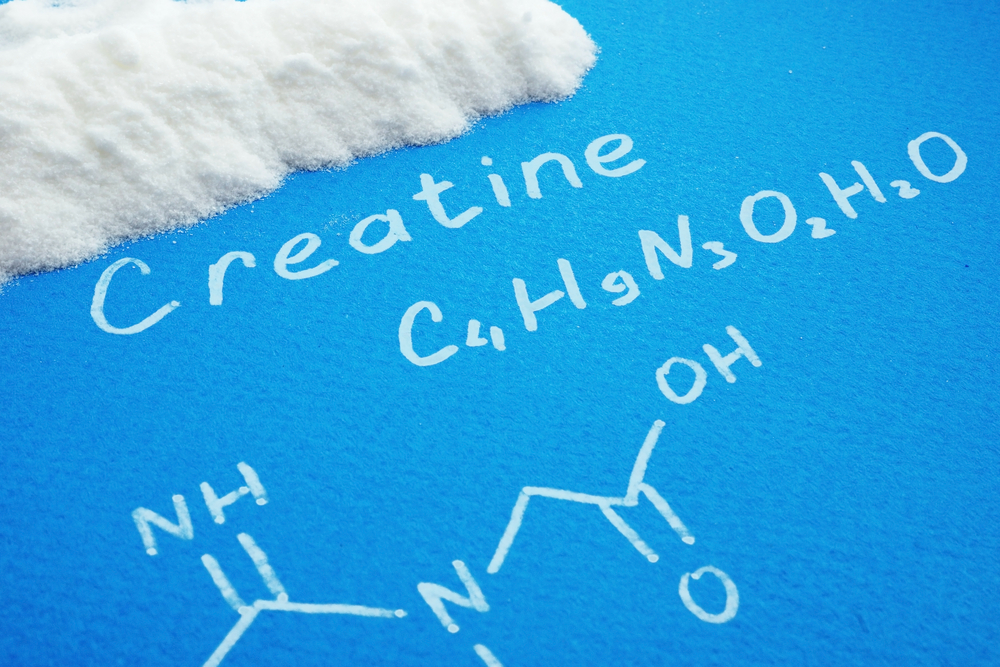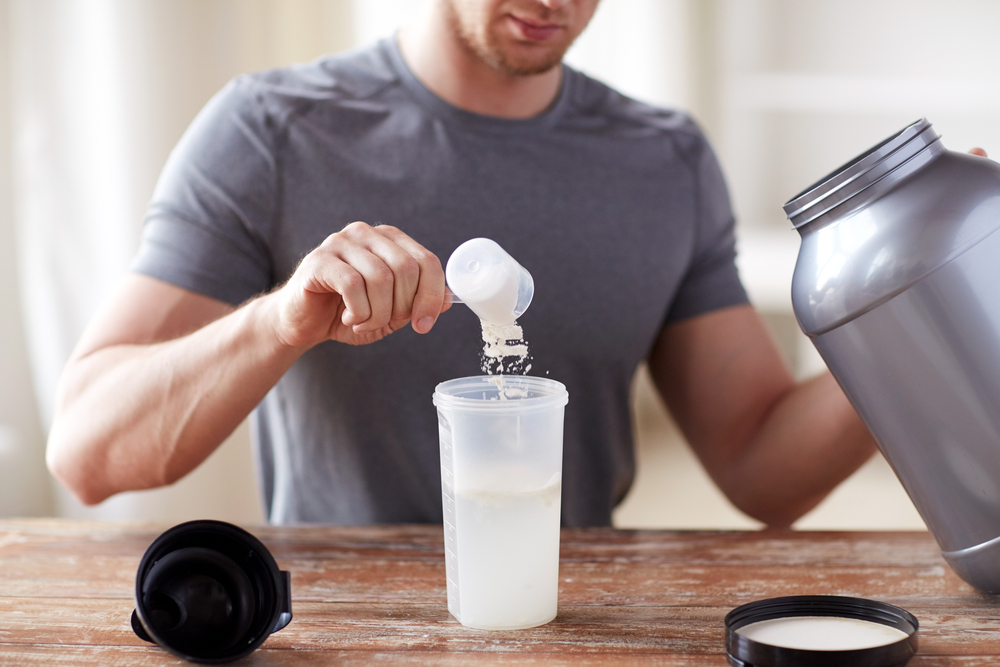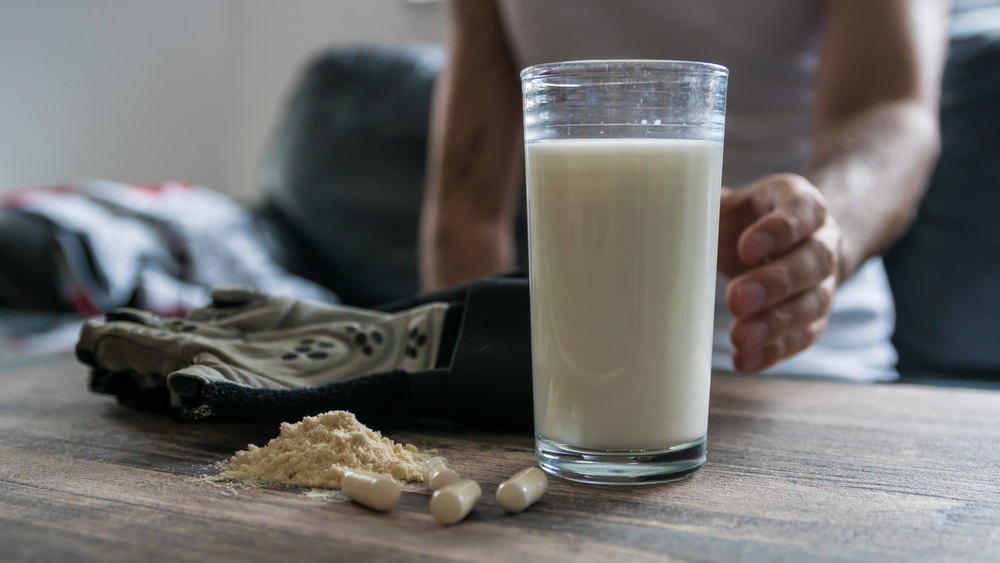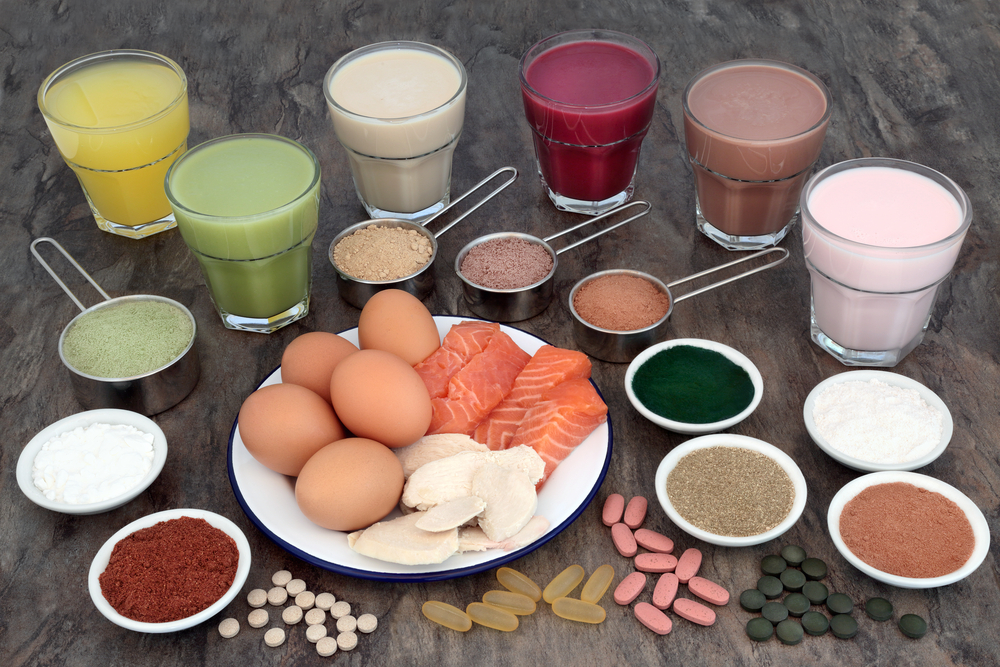Creatine – the most effective training enhancing supplement – how does it work, types and benefits

In response to the well-being movement and growth of fitness industry, companies race in production of new drinks and supplements. Yet, the creatine is dominating the industry for several years. It is an efficient product, which is choses by athletes, body-builders and even athletes taking part in the Olympics. It naturally supports the processes occurring in the organism, with no risk of side effects. Several studies proves it. It is a great way to accelerate the desired effects. In this way you get good silhouette and long-term enhancement in strength. What is more – endurance with simultaneous preservation of good organism homeostasis. Below, you can read about the exact mechanism, types, dosage, proper diet when using it and its benefits. So why it is so worth to use it.

Creatine – table of contents:
- What is creatine?
- How does the creatine work?
- Rising popularity of creatine as a diet supplement
- Why is it worth to use creatine?
- Types of creatine
- How to start supplementing creatine?
- How should your diet look when supplementing creatine?
- What about supplementing creatine during rest days?
- Natural sources of creatine in a daily diet.
- Are there any negative effects to supplementing creatine?
- Is supplementing creatine worth it?
What is creatine?
Creatine is an organic compound, naturally produced by the human body. It happens during the process of synthesis from three amino-acids: arginine, glycine and methionine. The majority of it is in muscles and tendons (98%). That is why while shaping the silhouette and increasing endurance it is so important to additionally supplement it. However, in small amounts you can find in the brain, kidneys, liver or testicles.

How does creatine work?
Natural deposits of creatine are small and limited. Our body needs about 2 g daily for proper functioning. Not only muscles, but also other processes occurring in the brain, for example creating neural connections. The organism is able alone to produce up to 1 g. As a result of amino-acid synthesis, food should contain the rest. For the people with a normal lifestyle and a diverse meat diet, this amount is sufficient. Beacuse meat is the best source of creatin.
In the case of athletes and people leading an active lifestyle, this amount could be not enough. During exercise the body use available deposits of creatine. But after depletation, it starts to look for it in other sources. It finds it in muscles. Thanks to the supplementation increase ability to its storage in a form of a quickly synthesizable phosphocreatine providing quick fix of energy. It is in a form of ATP release. It is of high importance in e.g. competitive sports, athletics or body-building, where you need to dynamic rise of strength and immediate reaction. Thanks to the acquired reserve of creatine, it also secures muscle fibers from catabolic effect – what most athletes and body-builders want to avoid.
Rising popularity of creatine as a diet supplement
People discover and characterizes creatine in 1832, however then it was only a medical curio. It finally gained popularity in the nineties of XX century, after media coverage on the subject of it use by Olympic medal winners on the XXVth Olympics in Barcelona in 1992. There could not be a better advertisement. Shortly after this events, the first company started selling creatine and its supplementation commenced for a global scale to better sport performance.

Why is it worth to use creatine?
Benefits coming from regular creatine use:
Higher strength – you can do more reps during training or if endurance is your aim in sports for example in running or cycling – you can tackle a longer distance. In case athletics muscle reaction is the most dynamic, through accumulation of higher storage of ATP inside muscles.
Endurance – thanks to higher resilience to fatigue and higher energy storage, training can last much longer, what directly influences the speed in which exercise goals you should reach.
Stimulates muscle growth – creatine is a vital component, which naturally takes part in the synthesis of proteins and anabolic processes, so, to put it simply, muscle growth. Its additional supplementation together with intense training results in gaining muscle mass.
Facilitates quick shaping of the silhouette – creatine simulates water absorption. It also absorbs water, giving the effect of full-shaped muscles. That is why supplementation should be done with elevated by 25% water intake.
Regeneration – reduces fatigue and accelerates regeneration of muscles.
Anti-oxidative protection – creatine exhibits protecting activity towards muscles securing them from oxidative stress and prevents tissue catabolism (their breakage, more precisely – loss of body mass).
Better short-term memory and concentration – it is an additional effect, because creatine is also crucial for the proper functioning of the brain, protein synthesis and creating new neural connections and their regeneration. For example, vegetarian or vegan diet it can be lacking, because its best source is meat. Its supplementation influences better functioning of the brain, what translates to better process of learning and remembering and alleviates fatigue after huge mental work.
Better well-being – creatine positively influences neurotransmitters serotonin and dopamine. Some researchers start to hypothesize that it could even be used in treatment of depression.
Types of creatine
Creatine monohydrate
It is the simplest form. The name all alone suggests that is filled with water. It is the most popular option because of its uncomplicated composition, low price and easy availability.
Creatine malate
In this version, particles are joined with malate acid, instead of water. This product is recommended for people, which are already in good condition, but want to shape their muscles even more.
Creatine citrate
This kind of supplement joins with citric acid. Its main property is good absorption and efficient growth of muscle fibers, without too much water accumulation in their core. Other name of this compound is tri-creatine citrate.
Magnesium creatine chelate
This kind of supplement is a composition of creatine and magnesium. Through synergistic activity – they balance each other and increase the absorption of it by muscles and sustain its deposits, what greatly enhances the results of intense training.
Creatine stack
It is the mixed version, combining several types of creatine, in various proportions. It is a specialized kind, tailored to your needs and effects, you would like to achieve.
These are the most popular types of creatine, however all in all they all have the same activity – the development fat-free muscle mass, increasing endurance and supplying muscles with energy. What divides them is chemical composition and how it is absorbed. Other variants of it available on the market are: luconate, ethyl ester, alpha-ketoglutarate, phosphate, buffered monohydrate, hydrochloride, nitrate, pyruvate and orotate.

How to start supplementing creatine?
There are two ways of supplementing:
The first theory is about saturating muscles with intensive dose of creatine (through the first days of supplementation). In order to supply them with enormous dose of energy, crucial in the first stages of training, when the muscle tissue is prone to fatigue and requires proper regeneration. The stage of loading lasts from 5 do 10 days, during which from 10 to 30 g of it is ingested. In the next step the dose is lowered to 5 g a day, continuing training and supplementation throughout 4 to 8 weeks.
Another model is constant supplementation. It consists of constant ingestion of creatine in 5 g dose a day. You can also use this ratio: 1 g for every 10 kg of body mass. This way a person of higher body mass can take a higher dose e.g. a person weighing 70 kg – can take a dose of 7 g a day.
It is worth remembering that, the organism can naturally produce creatine to 2 g a day, that is why it is important to pay attention to recommended doses – by the producer or personal coach, who assembled the diet and training. You ought to pay attention to prevent overdose.
How should the diet look like when supplementing creatine?
Important aspect is the diet and improving it with diet. Carbohydrates have beneficial influence on elevated creatine abruption. After their ingestion insulin level in the blood is elevated, which is crucial in the transport of it from tissues to muscles. Other substances exhibiting similar effect on creatine absorption are: spice tarragon, amino acid – leucine, alpha-lipoic acid (ALA) and elevated water consumption, in which creatine dissolves. It is worth pointing out that fats can negatively impact absorption of this supplement, limiting its action. So the meals must be planned to maximize creatine efficacy.
Another thing are stomach acids, which may negatively impact creatine, transforming it into creatinine – especially in the case of monohydrate. That is why supplementation after meal or before is the best solution. Another way would be to ingest creatine with juice or protein drink.
Additionally, one should stay away from alcohol, which interferes with protein synthesis in muscles and makes it difficult for the tissues to regenerate after intense training. To prevent interference to creatine we should also stay away from caffeine. If you have to drink coffee remember not to do this immediately before or after taking this supplement.

What about supplementing creatine during rest days?
Yes. During supplementation with creatine it is about saturating the muscles this organic compound, what will translate into long-term effect of higher strength, endurance and better sport results. Also on rest days it is recommended to take a dose of creatine. That is why it is vital to take it regularly especially in the first stage consisting of saturation and muscle tissue growth.
Natural sources of creatine
Of course the best and simplest source of creatine is diet involving meat. The most creatine rich are red meat, fish, one can list: beef, pork, herring, cod, salmon or tuna. Good choice would be also rabbit or poultry, so turkey breast or chicken fillet.
However, the amount of creatine eaten with food could be too low for the needs during intense training, that is why it could require additional supplementation.

Are there any negative effects of supplementing creatine?
Due to the adversaries of creatine use as a training enhancement supplement, its ingestion does not translate to the growth of muscle mass and endurance. However, it is a myth coming from false information, insufficient effort during training or wrong supplementation. In order to observe set goals it is required to maintain continuous supplementation, not only occasional or solely before the training.
Another issue are side effects – creatine does not have any proven negative consequences for health. Due to the fact that it is an organic compound naturally produced and synthesized by the human body, that is why it is its biggest benefit and an argument speaking for it. Additionally across recent years incomprehensible amount of studies about creatine was done – about its mechanism of action and creatine’s influence on human body, which confirm its efficient influence. So there should not be any concerns about its use, because its one of the most well-studied substances.
There are negative consequences regarding digestive tract, but they are very rare and come from improper use of creatine and not directly from its activity. Like for example, really high overdose above the recommended level or creatine intolerance might result in: vomiting or diarrhea. That is why one should always read the producer’s guidelines and pay attention when should you use the supplement, before or after training, in the morning or at noon. It is a very important aspect and one should always remember it.
Is supplementing creatine worth it?
Yes. If you aim to get quick and efficient effects of training and bettering of sport performance, it is worth to add it to your diet. Its supplementation give a big spur of energy for the muscles, which is crucial during intense training, what will allow you to make more reps. Additionally, creatine can help muscle tissue growth, simultaneously preventing catabolic effect, which can be an effect of enormous strain and restrictive diet. It is worth pointing out that together with age its natural concentration begins to drop, that is why older people should especially consider it.
